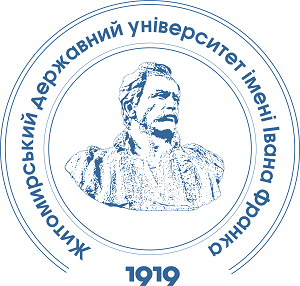MODELING THE MILITARY IMPACT OF SOIL COMPACTION ON THE BIOLOGICAL YIELD OF SPRING WHEAT ON SOILS WITH DIFFERENT GRANULOMETRIC COMPOSITION
DOI:
https://doi.org/10.32782/naturaljournal.11.2025.22Keywords:
humidity, granulometric composition, military and physical degradation, arable soils, spring wheat, soil bulk densityAbstract
The research of degradation phenomena that occur in the conditions of modern land use is an up-to-date direction of scientific research in the agrarian field. Soil compaction is one of the most widespread and negative phenomena of physical degradation caused by the intensive use of agricultural machinery, unregulated cultivation technologies, and in today’s conditions, the conduct of military operations on the territory of Ukraine. The purpose of the research was to modeling the military effect of different levels of soil compaction and moistening on the germination, growth and productivity of agricultural crops(using the example of spring wheat) on arable soils of different granulometric composition of the Left Bank Forest Steppe оf Ukraine. Research methods are analytical-bibliographic, laboratory-model, mathematical-statistical. It was established that the indicator of the soil bulk density had a close inverse correlation with the indicators of the sowing qualities of the seeds for growing plants: on sandy loam soil (the correlation coefficient R varied from -0.73...to -0.83). On heavy loamy soil the correlation coefficient R was – 0.83 – with the rate of germination, with the rest of the indicators had an average correlation. Soil compaction > 1.4 g/cm3 and a low level of moisture (at the level of 60% of the field soil water capacity) led to the deterioration of the root system and a decrease in the biological yield of the crop: by 7% and 10%, respectively, on heavy loam and sandy loam soils granulometric composition compared to the control. Thus, the experience of modeling the influence of compaction levels and soil moisture on seed germination and crop yield can be used as a basis for developing effective measures to prevent and overcome military degradation of arable soils.
References
Асмаковський Є.В. Вплив бойових дій на лісові природно-заповідні території басейну річки Снов в межах Семенівської територіальної громади Чернігівської області. Поводження з відходами в Україні: законодавство, економіка, технології : збірник матеріалів Національного форуму, 24–25 листопада 2022 р., м. Київ. Київ : Центр екологічної освіти та інформації, 2022. С. 192–193.
Бережняк Є.М., Наумовська О.І., Бережняк М.Ф. Деградаційні процеси в ґрунтах України та їх негативні наслідки для довкілля. Біологічні системи: теорія та інновації. 2022. Т. 13. № 3–4. С. 96–109. https://doi.org/10.31548/biologiya13(3-4).2022.014.
В Україні шукають шляхи відновлення деградованого ґрунту: проблему ускладнила війна, але вихід є. БТУ-ЦЕНТР. 2022 [Електронний ресурс]. URL: https://btu-center.com/news/v-ukraini-shukayut-shlyakhi-vidnovlennya-degradovanogo-gruntu-problemu-uskladnila-viyna-ale-vikhid-/ (дата звернення: 17.01.2025).
Ґрунтовий покрив України в умовах воєнних дій: стан, виклики, заходи з відновлення : монографія / за ред. С.А. Балюка, А.В. Кучера, М.І. Ромащенка. Київ : Аграрна наука, 2024. 340 с. https://doi.org/10.31073/978-966-540-612-9.
Єгоршин О.О., Лісовий М.В. Математичне планування польових дослідів та статистична обробка експериментальних даних. Харків, 2005. 193 с.
Концептуальні підходи до відновлення ґрунтів, що постраждали від збройної агресії : монографія / за ред. С.А. Балюка, А.В. Кучера, І.В. Пліско. Київ : Аграрна наука, 2024. 216 с. https://doi.org/10.31073/978-966-540-604-4.
Крилач С.І. Ріст та продуктивність кореневої системи сільськогосподарських культур залежно від агрофізичних характеристик ґрунту. Агрохімія і ґрунтознавство. 2019. Вип. 88. С. 68–73. https://doi.org/10.31073/acss88.
Медведєв В.В. Моніторинг ґрунтів України. Харків : ПФ «Антиква», 2002. 428 с.
Медведєв В.В., Пліско І.В., Крилач С.І., Накісько С.Г., Уваренко К.Ю. Фізична деградація орних ґрунтів України (оцінювання, профілактика, призупинення). Харків : ННЦ «Інститут ґрунтознавства та агрохімії імені О.Н. Соколовського», 2020. 110 с.
Пліско І.В., Романчук К.Ю., Крилач С.І. Механічна та фізична деградація орних ґрунтів внаслідок ведення військових дій в Україні. Вісник аграрної науки. 2023. № 10. С. 5–12. https://doi.org/10.31073/agrovisnyk202310-01.
Порівняльна характеристика шкал росту й розвитку зернових культур / С.М. Каленська, О.І. Присяжнюк, О.Ю. Половинчук, Н.В. Новицька. Plant Varieties Studying and Protection. 2018. Том 14. № 4. С. 406–414. https://doi.org/10.21498/2518-1017.14.4.2018.151906.
Тонха О.Л., Піковська О.В., Балаєв А.Д. Охорона ґрунтів від вітрової ерозії в сучасних умовах. НУБіП України. 2020 [Електронний ресурс]. URL: https://nubip.edu.ua/node/75451 (дата звернення 20.01.2025).
Формування посівних якостей насіння зернобобових і зернових культур / А.В. Баган, С.М. Шакалій, С.О. Юрченко, О.О. Четверик. Аграрні інновації. 2023. № 19. С. 7–11. https://doi.org/10.32848/agrar.innov.2023.19.1.
Цицюра Я.Г. Ґрунтореабілітаційний потенціал редьки олійної за її сидерального використання з позиції відновлення базових агрофізичних властивостей. Український журнал природничих наук. 2024. № 10. С. 185–196. https://doi.org/10.32782/naturaljournal.10.2024.17.
Anderson A., Palazzo A., Ayers P., Fehmi J., Shoop S., Sullivan P. Assessing the impacts of military vehicle traffic on natural areas. Introduction to the special issue and review of the relevant military vehicle impact literature. Journal of Terramechanics. 2005. Vol. 42. P. 143–158. https://doi.org/10.1016/j.jterra.2005.01.001.
Dejong-Hughes J., Moncrief J., Voorhees W., Swan J. Soil compaction: causes, effects and control. St. Paul, MN: University of Minnesota Extension Service, 2001. 16 р. [Електронний ресурс]. URL: https://conservancy.umn.edu/handle/11299/55483 (дата звернення: 20.01.2025).
Frene J.P., Pandey B.K., Castrillo G. Under pressure: elucidating soil compaction and its effect on soil functions. Plant Soil. 2024. Vol. 502. Р. 267–278. https://doi.org/10.1007/s11104-024-06573-2.
Hu W., Cichota R., Beare M., Müller K., Drewry J., Eger A. Soil structural vulnerability: Critical review and conceptual development. Geoderma. 2023. Vol. 430. 116346. https://doi.org/10.1016/j.geoderma.2023.116346.
Krylach S., Romanchuk K. Methods of crop adaptation to unfavorable agrophysical parameters of the arable soil layer. Scientific Papers. Series A. Agronomy. 2022. Vol. LXV. Issue 1. Р. 77–84 [Електронний ресурс]. URL: https://agronomyjournal.usamv.ro/pdf/2022/issue_1/Art9.pdf (дата звернення: 20.01.2025).
Peggy S.A., Stephen J.T. Impact of M1A1 main battle tank disturbance on soil quality, invertebrates, and vegetation characteristics. Journal of Terramechanics. 2005. Vol. 42. Is. 3–4. P. 159–176. https://doi.org/10.1016/j.jterra.2004.10.014.
Sanat G., Khattak G., Webster C., Saeed I., Khan A.J. Effect of soil strength on roots and vegetative growth of wheat at seedling stage. Pakistan Journal of Botany. 2015. Vol. 47 (2). Р. 523–526.
Shaheb M.R., Venkatesh R., Shearer S.A. A Review on the effect of soil compaction and its management for sustainable crop production. Journal of Biosystems Engineering. 2021. Vol. 46. Р. 417–439. https://doi.org/10.1007/s42853-021-00117-7.






